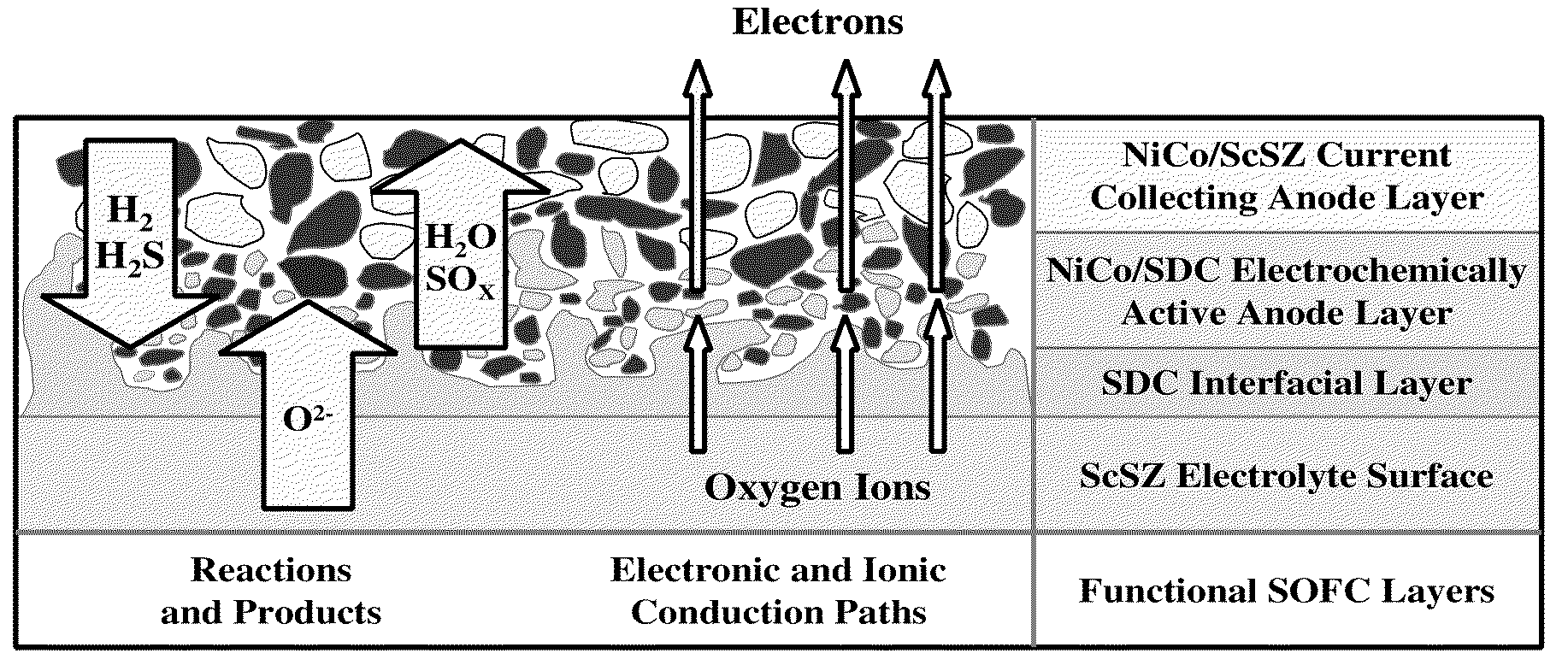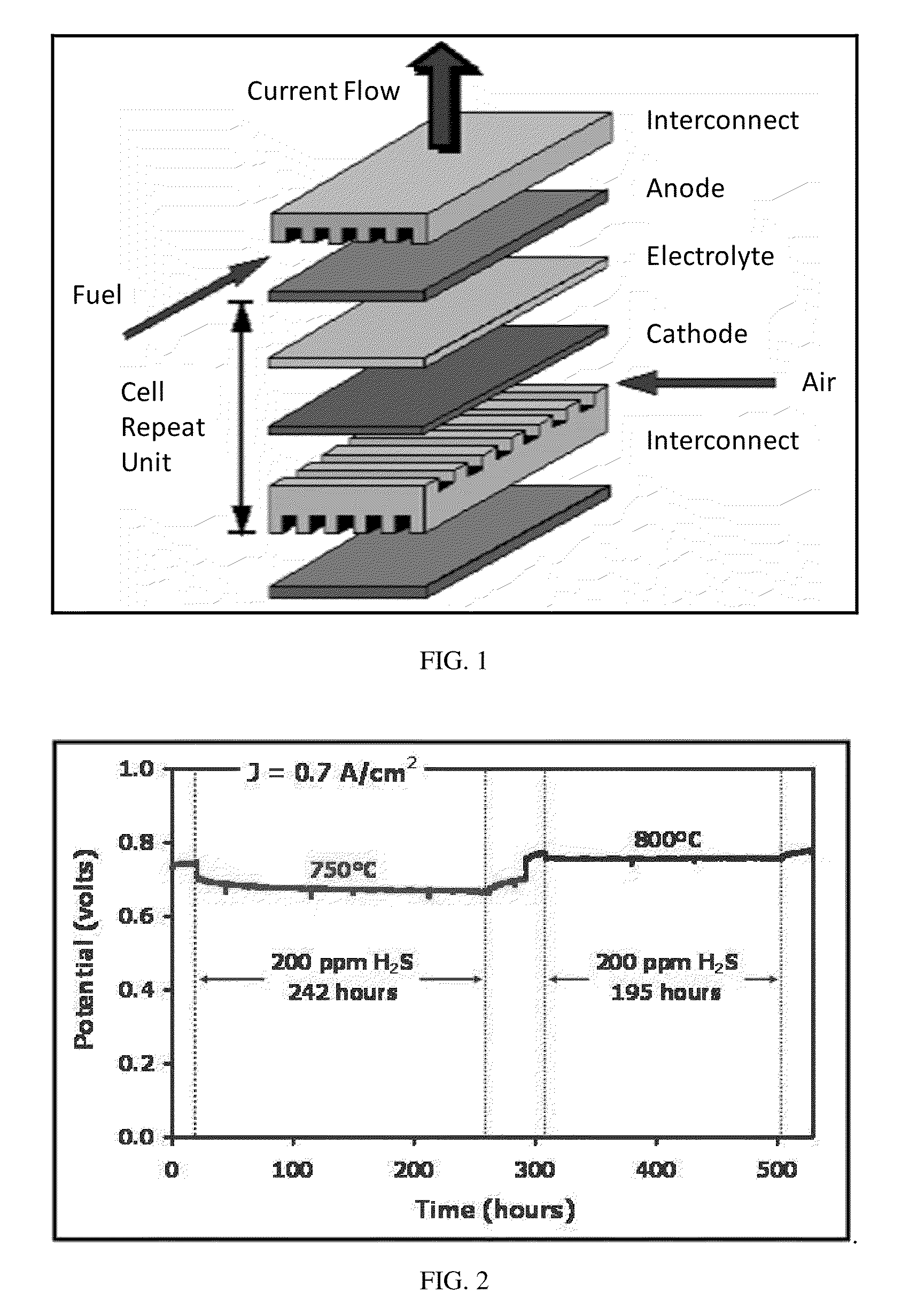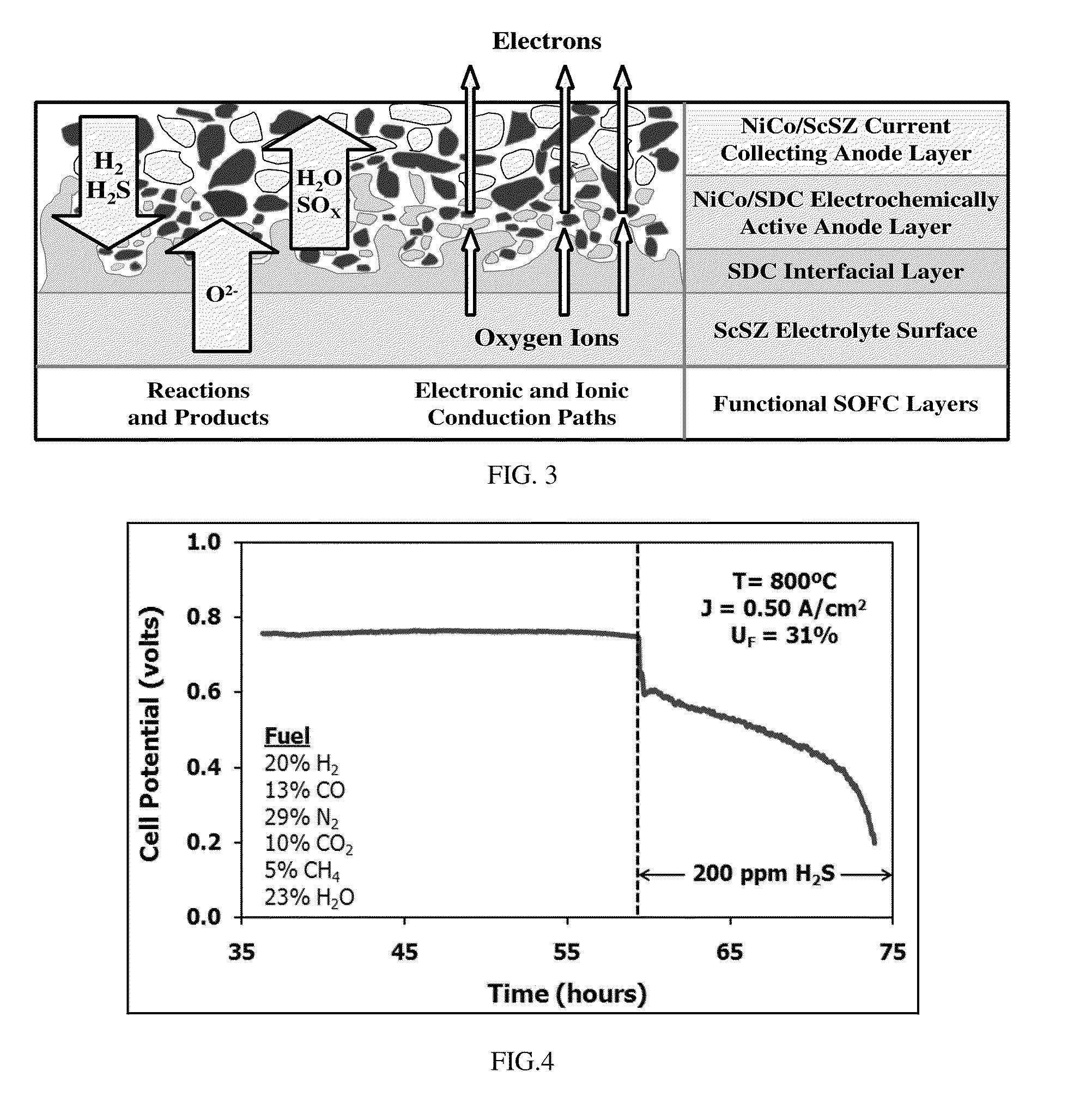Current Collectors for Solid Oxide Fuel Cell Stacks
a technology of solid oxide fuel cell and collector, which is applied in the direction of cell components, electrochemical generators, coatings, etc., can solve the problems of affecting the performance of conventional sofc, containing some level of sulfur, and escalating the demand for efficient and reliable electrical power, so as to improve the sulfur tolerance and improve the performance of fuel cells with hydrocarbon fuels.
- Summary
- Abstract
- Description
- Claims
- Application Information
AI Technical Summary
Benefits of technology
Problems solved by technology
Method used
Image
Examples
example 1
[0042]Solid oxide fuel cells were prepared for subsequent use in fuel cell testing with novel anode current collector foams as described herein in Examples 2, 4, 6, 10, 11, and 12. A 10×10 cm FlexCell fuel cell substrate was made from ScSZ-6 (Scandia-doped zirconia, 6 mol % Sc2O3) electrolyte material with an active area of 28 cm2. Cells were fabricated with cobalt-doped SDC (scandium doped ceria) interfacial layers on both the anode and cathode faces, with a bi-layer anode on the anode face, and with a bi-layer cathode on the cathode face. Cells were fabricated as described below:
[0043]Deposition of Interfacial Layer Coatings: Cobalt-doped SDC interfacial layer coatings were prepared according to known aerosol spray deposition methods. Cobalt-doped SDC interfacial layer ink was prepared using samarium-doped ceria powders of the composition (Ce0.80Sm0.20)O1.90 (SDC-20). The ink was prepared by dispersing SDC-20 powders into a terpineol based an ink vehicle. The SDC-20 powders in thi...
example 2
[0051]A solid oxide fuel cell was prepared from a 10×10 cm FlexCell substrate made from ScSZ-6 electrolyte material with an active area of 28 cm2. This cell was fabricated with cobalt-doped SDC interfacial layers, electrochemically active (NiO—CoO / SDC) and current carrying (NiO / ScSZ) anode layers, and electrochemically active (LSZF / GDC / Pd) and current carrying (LSZF / Pd) cathode layers identical to those as described in Example 1. The anode current collector for this large-area cell was as-received pure nickel foam. The contact paste used between the anode and the current collector foam was a Ni / NiO ink that was prepared as follows:
[0052]Preparation of NiO precursor ink: NiO Precursor Powder was Ball Milled in acetone with zirconia grinding media and dried. A portion of this powder was dispersed into a terpineol based ink vehicle to prepare NiO precursor ink.
[0053]Preparation of NiO Precursor Ink: Ni metal precursor powder was dispersed into a terpineol based ink vehicle to prepare N...
example 3
[0056]Sulfur tolerant cermet foam anode current collectors that exhibit high sulfur tolerant properties were made infiltrating a polymeric foam templates with anode material, and subsequently burning out the polymer template (see FIGS. 5 and 6). The resulting foam was composed of 100% of the sulfur tolerant anode material. This foam was prepared for subsequent use in Example 4. The sulfur tolerant anode current collectors were fabricated as follows:
[0057]Preparation of Anode Current Collector Precursor Powder. NiO—CoO solid solution powder (Ni0.75CO0.25O) containing a small amount of nanoscale samarium-doped ceria (SDC-15, Ce0.85Sm0.15O1.925) was prepared for subsequent use in current collector foam fabrication, described below. The first step was the preparation of a mixture that contained 312.5 grams of nickel oxide (NiO), 187.50 grams of cobalt oxide (CO3O4), and 10 grams of nanoscale SDC-15 powder having a surface area of 195 m2 / gram. This mixture was ball milled in acetone with...
PUM
| Property | Measurement | Unit |
|---|---|---|
| temperature | aaaaa | aaaaa |
| area | aaaaa | aaaaa |
| area | aaaaa | aaaaa |
Abstract
Description
Claims
Application Information
 Login to View More
Login to View More - R&D
- Intellectual Property
- Life Sciences
- Materials
- Tech Scout
- Unparalleled Data Quality
- Higher Quality Content
- 60% Fewer Hallucinations
Browse by: Latest US Patents, China's latest patents, Technical Efficacy Thesaurus, Application Domain, Technology Topic, Popular Technical Reports.
© 2025 PatSnap. All rights reserved.Legal|Privacy policy|Modern Slavery Act Transparency Statement|Sitemap|About US| Contact US: help@patsnap.com



